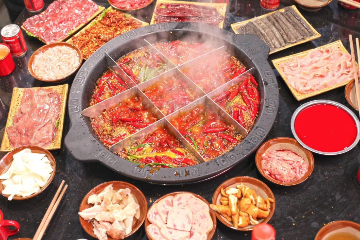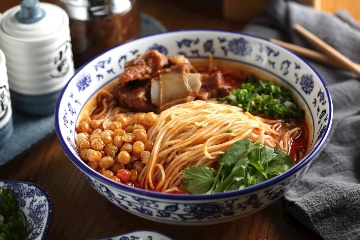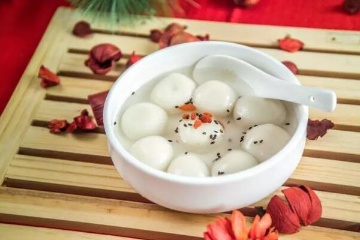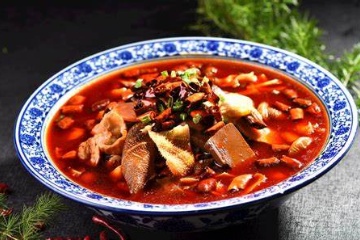Chongqing, a city renowned for its spicy and flavorful cuisine, offers a diverse array of dishes that cater to adventurous food lovers. Here are ten must-try Chongqing specialties:
1. Chongqing Hot Pot (重庆火锅)

The origins of Chongqing hot pot are steeped in legend. One account describes dockworkers using copper pots to combat the cold and humidity of the mountainous city. Another narrative speaks of boatmen on the Yangtze River sharing a communal pot of spiced broth. Regardless of its precise beginnings, the dish’s spicy and numbing characteristics perfectly complemented the region’s climate and culinary preferences. Over time, it evolved into the beloved dish we know today.
The essence of Chongqing hot pot lies in its broth and cooking method. The broth, typically a fiery red, is a complex blend of chili peppers, Sichuan peppercorns, and various aromatics. The spiciness and numbing sensation are key features, often adjustable to the diner’s preference. The cooking process is unique, with diners cooking their chosen ingredients—meats, seafood, vegetables, tofu, and noodles—directly in the simmering broth. The communal nature of the meal encourages interaction and sharing, making it a perfect choice for gatherings with friends and family.
Chongqing hot pot is known for its rich, intensely spicy and numbing red oil broth. This broth is often accompanied by a variety of ingredients, including thinly sliced meats, fresh seafood, a wide array of vegetables, and chewy noodles. The dish is highly customizable, allowing diners to choose their preferred level of spiciness and ingredients. The dipping sauces are also highly customizable, with a base of sesame oil and garlic, plus various additions like cilantro, scallions, and soy sauce.
While the core concept remains consistent, Chongqing hot pot exhibits significant variations. These differences can stem from the type of broth, the ingredients used, or the overall dining experience. Traditional hot pots feature a rich, intensely spicy and numbing red oil broth, with a variety of meats, offal, vegetables, and noodles. Premium or modern hot pots may offer refined broth variations, incorporating other flavors and higher-quality ingredients. Family-style or mild hot pots include both spicy and non-spicy broth options, catering to a wider range of spice tolerances. The nine-grid hot pot, or "Jiǔ gōng gé," features a spicy broth divided into nine sections with varying heat levels, allowing for precise cooking based on ingredient sensitivity.
2. Chongqing Noodles (重庆小面)

Chongqing noodles, a beloved staple in the city, are renowned for their thin, chewy texture and rich, spicy flavor. These noodles are typically served in a savory broth that is infused with a blend of spices and oils, creating a complex and aromatic taste that tantalizes the senses. The dish is often topped with minced meat, peanuts, and pickled vegetables, adding layers of flavor and texture.
The history of Chongqing noodles dates back centuries, reflecting the city's rich culinary traditions. The noodles are made from high-quality wheat flour, ensuring a smooth and elastic texture. The broth is carefully prepared using a variety of ingredients, including Sichuan peppercorns, chili peppers, garlic, ginger, and other aromatic spices. This combination creates a spicy and numbing sensation that is characteristic of Chongqing cuisine.
Chongqing noodles are not just a meal; they are a cultural experience. The dish is often enjoyed for breakfast, providing a hearty and flavorful start to the day. It is also a popular choice for a quick snack or a light lunch. The noodles are typically served in small bowls, making them convenient for on-the-go dining. The toppings, such as minced pork, peanuts, and pickled vegetables, add a satisfying crunch and a burst of flavor with each bite.
One of the unique aspects of Chongqing noodles is the customization options. Diners can choose from a variety of toppings and adjust the spiciness of the broth to suit their preferences. Some popular toppings include sliced green onions, cilantro, and soft-boiled eggs. The noodles can be served in a dry version, known as "gan mian," or in a soup version, known as "tang mian." Each version offers a different eating experience, catering to diverse tastes.
Chongqing noodles are often found in small street-side stalls and local eateries, where they are prepared fresh daily. The aroma of the spices and the sizzle of the noodles in the broth create an inviting atmosphere that draws in both locals and tourists. The dish is not only a source of comfort and nourishment but also a symbol of Chongqing's vibrant street food culture.
In recent years, Chongqing noodles have gained popularity beyond the city, with many restaurants and food stalls offering this dish in other parts of China and around the world. The global appeal of Chongqing noodles is a testament to their universal appeal and the enduring charm of Chongqing's culinary heritage.
Chongqing noodles are more than just a dish; they are a reflection of the city's rich cultural tapestry and its love for bold, spicy flavors. Whether enjoyed in a bustling street stall or a cozy restaurant, Chongqing noodles offer a taste of the city's vibrant spirit and culinary excellence.
3. Chongqing Spicy Rice Noodles (重庆酸辣粉)

Chongqing Spicy Rice Noodles, or "Suanlafen," are a beloved street food in Chongqing, known for their unique combination of tangy and spicy flavors. This dish is a perfect representation of Chongqing's bold and adventurous culinary style, offering a delightful mix of textures and tastes that keep locals and tourists coming back for more.
The thick, chewy rice noodles are the star of the dish, providing a satisfying mouthfeel that pairs perfectly with the rich, flavorful broth. The broth itself is a complex blend of ingredients, carefully crafted to deliver a tangy and spicy experience. Made from a combination of vinegar, chili oil, and Sichuan peppercorns, the broth offers a numbing and spicy sensation that is both invigorating and comforting. The use of Sichuan peppercorns is particularly noteworthy, as they add a distinctive numbing quality that is a hallmark of Chongqing cuisine.
Toppings play a crucial role in enhancing the overall flavor profile of Suanlafen. Common toppings include beans, which add a hearty and nutritious element to the dish, and peanuts, which provide a delightful crunch. Fresh cilantro is often sprinkled on top, adding a burst of freshness and a hint of herbal flavor that complements the spiciness of the broth. These toppings work together to create a harmonious balance of flavors and textures, making each bite a sensory adventure.
Suanlafen is not just a dish; it is a cultural phenomenon in Chongqing. Street vendors can be found throughout the city, serving up bowls of this spicy delight to hungry passersby. It is a popular choice for breakfast, lunch, or a quick snack, offering a quick burst of energy and flavor. The dish is often enjoyed in a casual setting, with people standing around street corners or sitting on small stools, savoring the tangy and spicy noodles.
The popularity of Suanlafen extends beyond Chongqing, with many cities in China and around the world featuring this dish in their local food scenes. Its universal appeal lies in its ability to satisfy cravings for both tanginess and spiciness, making it a favorite among those who enjoy bold flavors. Whether you are a fan of spicy food or looking to try something new, Chongqing Spicy Rice Noodles offer a unique and memorable dining experience.
4. Mountain City Mini Tangyuan (山城小汤圆)

Mountain City mini tangyuan, a beloved dessert in Chongqing, are small, delicate glutinous rice balls filled with sweet sesame or peanut paste. These dumplings are meticulously crafted, ensuring a soft and chewy texture that melts in the mouth. The filling, whether it is the rich, nutty flavor of sesame or the creamy smoothness of peanut paste, adds a delightful contrast to the tender rice exterior.
The process of making these tangyuan is an art form. The glutinous rice flour is kneaded into a smooth dough, then carefully shaped into small balls. Each ball is filled with a small amount of paste before being sealed and gently boiled until they float to the surface, indicating they are ready to be served. The boiling process gives the tangyuan a slightly translucent appearance, enhancing their visual appeal.
Once cooked, the tangyuan are served in a sweet soup, often made from a combination of brown sugar, ginger, and water. The soup is simmered until the sugar dissolves, creating a rich, aromatic liquid that complements the dumplings perfectly. The addition of osmanthus flowers, with their delicate, floral fragrance, elevates the dish to a higher level of sophistication. These flowers not only add a beautiful visual element but also infuse the soup with a subtle, sweet aroma that enhances the overall dining experience.
Mountain City mini tangyuan are particularly popular during festivals and special occasions. They are often associated with the Lantern Festival, where families gather to celebrate and enjoy traditional foods. The round shape of the tangyuan symbolizes family reunion and harmony, making them a meaningful part of festive meals. The act of sharing and eating tangyuan together strengthens bonds and creates lasting memories.
The combination of the soft, chewy texture of the tangyuan with the sweet, fragrant soup creates a harmonious and satisfying dessert. Each bite offers a burst of flavors and textures that delight the senses. Whether enjoyed as a light dessert after a heavy meal or as a sweet treat during a festive gathering, Mountain City mini tangyuan provide a comforting and indulgent experience.
5. Chongqing Maoxuewang (重庆毛血旺)

Maoxuewang, a quintessential Chongqing dish, is a spicy soup that showcases the region’s bold and adventurous culinary spirit. This hearty soup is made with a variety of offal, including tripe, duck blood, and kidneys, all cooked in a rich, spicy broth. Each ingredient is carefully selected and prepared to ensure a tender and flavorful result. The tripe is sliced into thin, manageable pieces, while the duck blood is gently curdled to achieve a smooth texture. The kidneys are carefully cleaned and sliced to remove any lingering odors, ensuring a pleasant dining experience.
The broth itself is a masterpiece of flavors. It is infused with Sichuan peppercorns and chili peppers, creating a numbing and spicy sensation that is both invigorating and comforting. The Sichuan peppercorns, known for their unique numbing effect, are combined with a variety of chili peppers to achieve a perfect balance of heat and flavor. The broth is simmered for hours, allowing the spices to meld together and create a complex, aromatic base. The result is a broth that is both spicy and rich, with a depth of flavor that is unmatched.
Maoxuewang is not just a dish; it is an experience. The combination of tender offal and the spicy broth creates a symphony of textures and flavors that tantalize the taste buds. The tripe adds a chewy texture, while the duck blood provides a smooth, almost velvety mouthfeel. The kidneys contribute a rich, hearty flavor that complements the spiciness of the broth. Each bite is a journey through the diverse flavors and textures of Chongqing cuisine.
This dish is often served with a side of white rice, which helps to balance the intense flavors of the soup. The rice acts as a neutral canvas, allowing the bold flavors of the broth and offal to shine through. The combination of the spicy soup and the mild rice creates a harmonious and satisfying meal. Maoxuewang is a dish that is best enjoyed with friends and family, as the communal nature of the meal enhances the overall dining experience.
These dishes showcase the bold and spicy flavors that Chongqing cuisine is famous for. Whether you are a fan of spicy food or looking to try something new, Chongqing's culinary scene offers an unforgettable experience. Each dish is a testament to the city's rich culinary heritage and the creativity of its chefs.




































